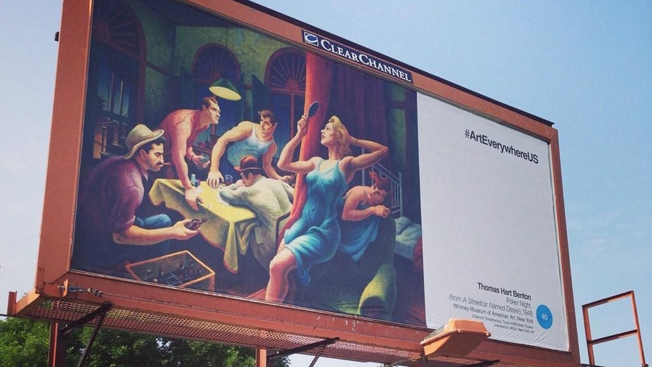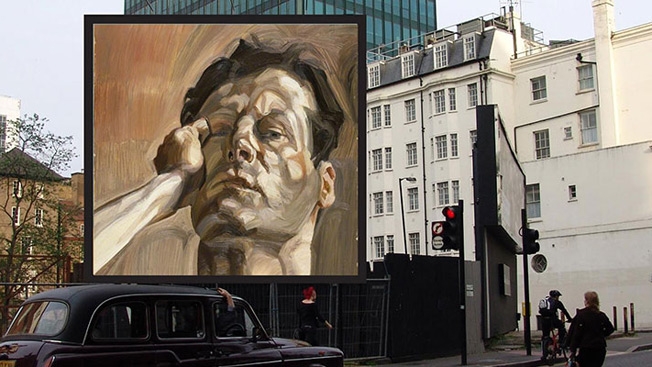Art Takes Over 50,000 Outdoor Ad Spaces in the U.S., and Wow Is It Beautiful
Posted in: Uncategorized
The next Campbell’s Soup billboard you see might just be a masterpiece.
In fact, it could be Andy Warhol’s iconic “Campbell’s Soup Can” from 1964. Reproductions of that particular work, along with 57 others, will be popping up throughout the month of August on some 50,000 static and digital billboards, outdoor kiosks and transit signs in 170 American cities and towns in all 50 states—part of a project called Art Everywhere U.S.
Inspired by a similar program last year in the U.K., the U.S. version is sponsored by the Outdoor Advertising Association of America in conjunction with the Art Institute of Chicago, the Dallas Museum of Art, the Los Angeles County Museum of Art, the National Gallery in Washington, D.C., and the Whitney Museum in New York. Those institutions hope to attract visitors, while the OAAA is showcasing the latest technology. (You can scan the artwork via smartphone to learn about the images, their creators and the museums.)

Art Everywhere U.S. hasn’t assessed the value of the donated ad space, but the signage used for the British effort last summer—which ran for two weeks and had fewer than half as many installations—was worth almost $5 million.
Check out a map of the locations here.
The U.S. effort launches today in Times Square and will showcase 50 works selected by the public and eight chosen by the museums. Folks were asked to pick their favorites from among 100 possibilities; 170,000 votes were cast, and Edward Hopper’s “Nighthawks”—the oft-parodied, quintessentially American “lonely diner” scene from 1942—topped the poll.

The selections span 230 years of U.S. history, from 1778 to 2008, and it’s amazing how evocatively these works, viewed as a progression, capture the increasing complexity and ambiguity of the American experience. Gilbert Stuart’s portrait of George Washington shows our first president, who sat for the artist in 1793, in a suitably stately and assured pose. By the time we reach Grant Wood’s Iowa farm couple in “American Gothic” (1930), we see a society clinging to traditions but bedeviled by change (ouch, that pitchfork!). Later works informed by mass media, like Roy Lichtenstein’s Disney-fied “Look Mickey” (1961), and the aforementioned Warhol, show artists forging new forms amid sensory overload, striving to simplify and make sense of a world spinning out of control.

In the context of Art Everywhere, “Campbell’s Soup Can” really resonates. This hyper-realistic interpretation of a product that appeared in countless ads will now replace the advertising it skewered, bringing Warhol’s trenchant comment on our commoditized existence full circle.
It seems fitting that in our fickle, media-centric society, Andy Warhol’s 15 minutes of fame keep running into overtime.
![]()







